- Home
- V. S. Naipaul
The Masque of Africa Page 26
The Masque of Africa Read online
Page 26
The memorial itself was an affair of dry-walling and water slipping into a pool: the standard metaphors of this kind of memorial. It would have meant nothing without the blown-up newspaper photograph of the death of Hector Pieterson: the dead or dying boy being carried in the arms of a young man, his distraught sister walking beside them. As it happened, she was there that morning, talking to a group of overseas visitors; and when she was done with them she came to us, a woman in middle life, thirty-three years older than in the photograph, ready to re-live the incidents of that day.
Even with the animal skins in the background it was intensely moving; and yet the memorial seemed a passing thing, wasteful of space; the photograph, its centre piece, seemed destined to fade; and I wondered how much longer this memorial to real pain would last. It was only seven years old, and had already been vandalised more than once by local children, to whom its architectural metaphors meant nothing. Elsewhere in Soweto, outside a café, the newspaper photograph had been rendered quite effectively in sculpture, without comment; that seemed more likely to last.
11
IN SOUTH AFRICA, with its many groups, its many passions, its abiding tensions, the visitor, seeking a necessary point of rest, moves from group to group, saying, rather like a Zen student: “Not this, not this.” It is the method in small of Rian Malan’s great book, My Traitor’s Heart; but the division in his heart—an Afrikaner for nine generations—is the basic and bloody division between black and white. The book begins with a brief and incomplete account of an eighteenth-century ancestor who, in defiance of law and custom, runs away with a slave woman. When this ancestor reappears he has no slave woman beside him; more than that, he has become a complete white leader. The writer can give no reason; the records give none; there is no story of the life of the ancestor with his slave lover. The whole thing is a mystery; and My Traitor’s Heart suggests, but only suggests, that the writer’s waverings have this quality of old mystery.
This unusual back-and-forth method, of autobiography and reportage, works because Rian Malan is a master of landscape and a master of narrative, with a gift of living language that bubbles up from a full heart and an active mind. But a book is a book; it has narrative needs. The back-and-forth method will not take a book through to the end; it needs some kind of resolution. The reader has to be sent away with a feeling of purpose, of something achieved. Rian Malan is enough of a writer to understand this. The bulk of the book took two years to write; but the last few pages took six months. Language wouldn’t have been a problem; the writer’s worry would have been the resolution of the material he has laid out, as big a problem in his book as in real life.
When we talked about things he said, “This is a history of victims. There are no real heroes aside from Mandela, who suffered nobly. There is no one who will spell it out. Apartheid is over, and you have the abyss before you, and the only thing that will get you out is work, work, and work.” He was not an admirer of Winnie Mandela’s; but I thought this idea of work (which was also Joseph Conrad’s) would have coincided with hers. (From Heart of Darkness: “Their talk, however, was the talk of sordid buccaneers: it was reckless without hardihood, greedy without audacity, and cruel without courage; there was not an atom of foresight or of serious intention in the whole batch of them, and they did not seem aware these things are wanted for the work of the world.”)
Rian Malan said, “I am obsessed with what came after apartheid. One legacy of apartheid is that this is the only country where the economy works and there are solid skyscrapers on the skyline. The rest of Africa is such a mess. If these African countries want to see how it works they should look at South Africa.”
So My Traitor’s Heart ends with a parable (the author actually uses the word). It is the story of a white (or English) couple who seek through a life of work and sacrifice in a desolate and heartbreaking landscape to get to the heart of Africa (if it can be put like that). Nothing in Rian Malan is straight, however, and this parable of apparent triumph is actually a story of a tragedy, of two wasted lives; but Rian Malan, while acknowledging that, in his unbending way rises above his story, and suggests that this might be a way ahead for white South Africa: a place where whites have no guarantees.
The couple in his parable are Neil and Creina Alcock. They move to a piece of church land on the boundary of white South Africa and they begin to practise there the simple, machineless agriculture that might attract Africans. It is a terrible piece of land. It will never—like parts of white farmland—look like central California. It is rocky and arid, and is liable to repeated drought that can wipe out the work of years. The land carries too many people. It is also full of borderland hate: white for black, and all the unreasoning hate—often blazing up into full-scale war—that the Zulu factions have for one another. Still, Neil and Creina work this unpromising land until the church (fighting its own war, and unhappy with Creina for giving birth-control pills to African women) asks them to leave. They have the good fortune to get a piece of land, sixty miles away, from a South African corporation, and they continue their work there.
Their first idea had been to start a cattle co-operative. Pasturage could then be controlled by segments in this badly eroded land and the grass could revive. But there was a tradition of cattle-rustling among the Zulus; hundreds of unprotected cattle would be a standing provocation. So the idea of the cattle co-operative was laid aside, and Neil and Creina looked instead to develop a self-sustaining agricultural project. The river would provide water; there would be experimental solar cookers and methane-digesters. The project was housed in eleven Zulu-style huts, mud and stone and thatch. Neil and Creina were living on fifty dollars a month. Visitors began to come, some to spend a night in a hut, and it began to look as though the difficult project was taking off.
It seemed at one time that the danger to Neil would come from white farmers on the other side of the border. They thought that Neil was giving his Africans too much encouragement, especially during times of drought when he cut down fences on the border and sent the cattle and goats of Africans to feed on the lusher grass on the other side. But, in fact, Neil seemed to have enjoyed some degree of licence as a madman on both sides of the border. And the danger, when it came, was from a random source that no one could have predicted: a factional Zulu war that had almost no cause, and was principally an expression of the Zulu love of fighting.
And, final, dreadful irony, it was because he had agreed to try to end a little Zulu war that he was killed. He was killed in an ambush by warriors from one side. He was driving his microbus to a peace meeting. The warriors, rising from behind boulders at the side of the road, aimed at him, the peace-maker. He was hit in the neck; he opened the microbus door and fell out on the road, dead.
Life became very hard for Creina. A widow in Africa is nothing, and Creina lost all the authority she had enjoyed as Neil’s wife. Young starveling boys she had taken in and nurtured now turned against her, began to steal from her. They stole her cassette, her typewriter. They stole the money, two thousand dollars, she had put aside to pay farm women for their beadwork; this was an important part of the farm’s income. Now that there wasn’t the money to pay the women she had to pay them in instalments out of her seventy-five dollars a month wages. It was easy to steal from Creina; there were no locks on her doors. And it got worse. One man falsely accused her of killing eight of his goats. He wanted money for his goats; otherwise he was going to kill her. People she knew pleaded with her to leave the farm, but she didn’t.
She told Rian Malan, “If you’re really going to live in Africa, you have to be able to look at it and say, ‘This is the way of love, down this road: look at it hard. This is where it is going to lead you.’ ”
This is the resolution of this marvellous book. It is not easy to accept. Creina is so much finer than the louts who exploit her. Perhaps the problem is that “love” is not defined. Without that definition it is hard to follow Creina when she tells Rian Malan, “I think you will
know what I mean if I tell you love is worth nothing until it has been tested by its own defeat.” It may even be that in this parable the writer is finding a way of saying something quite difficult: that after apartheid a resolution is not really possible until the people who wish to impose themselves on Africa violate some essential part of their being.
March 2008–September 2009
A NOTE ABOUT THE AUTHOR
V. S. Naipaul was born in Trinidad in 1932. He went to England on a scholarship in 1950. After four years at University College, Oxford, he began to write, and since then has followed no other profession. He has published more than twenty-six books of fiction and nonfiction, including A House for Mr. Biswas; In a Free State, which won the Booker Prize in 1971; A Bend in the River; An Area of Darkness; Among the Believers; and Magic Seeds. V. S. Naipaul was knighted in 1989. He was awarded the David Cohen British Literature Prize by the Arts Council of England in 1993 and the Nobel Prize in Literature in 2001. He holds honorary doctorates from Cambridge University and Columbia University in New York, and honorary degrees from the universities of Cambridge, London and Oxford. He lives in Wiltshire, England.

 The Masque of Africa: Glimpses of African Belief
The Masque of Africa: Glimpses of African Belief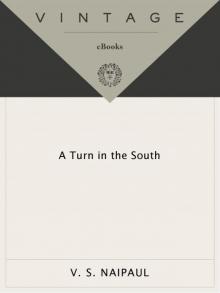 A Turn in the South
A Turn in the South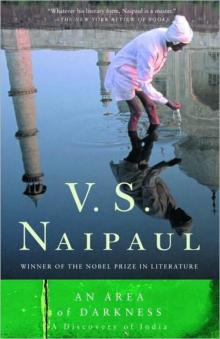 An Area of Darkness
An Area of Darkness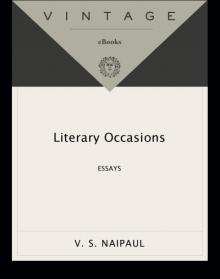 Literary Occasions: Essays
Literary Occasions: Essays A Way in the World
A Way in the World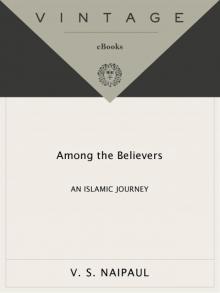 Among the Believers: An Islamic Journey
Among the Believers: An Islamic Journey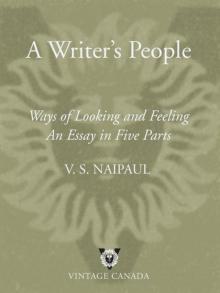 A Writer's People: Ways of Looking and Feeling
A Writer's People: Ways of Looking and Feeling The Mimic Men: A Novel
The Mimic Men: A Novel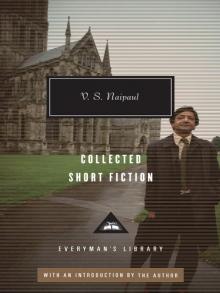 Collected Short Fiction
Collected Short Fiction India: A Million Mutinies Now
India: A Million Mutinies Now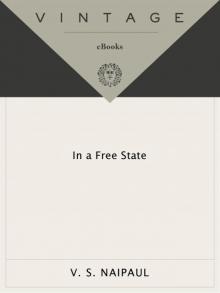 In a Free State
In a Free State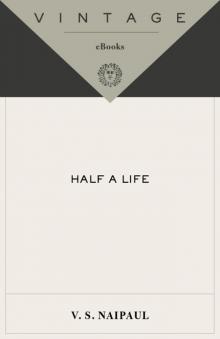 Half a Life
Half a Life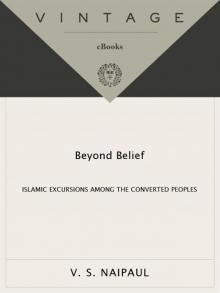 Beyond Belief: Islamic Excursions Among the Converted Peoples
Beyond Belief: Islamic Excursions Among the Converted Peoples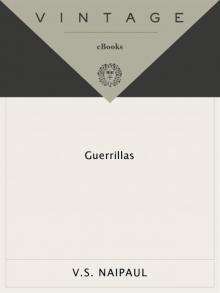 Guerrillas
Guerrillas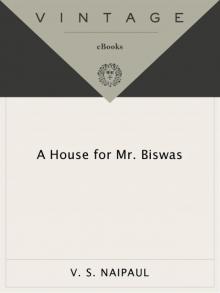 A House for Mr. Biswas
A House for Mr. Biswas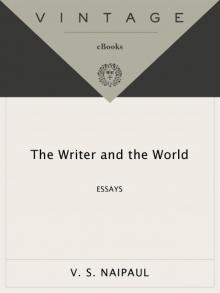 The Writer and the World: Essays
The Writer and the World: Essays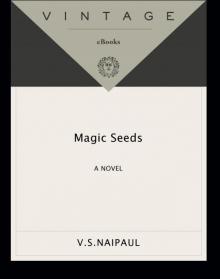 Magic Seeds
Magic Seeds The Mystic Masseur
The Mystic Masseur Miguel Street
Miguel Street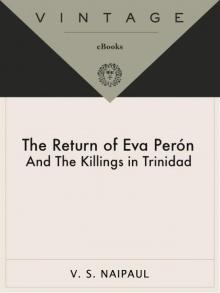 The Return of Eva Perón, With the Killings in Trinidad
The Return of Eva Perón, With the Killings in Trinidad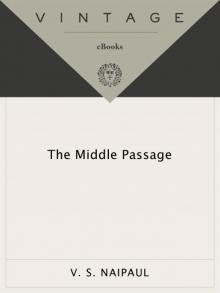 The Middle Passage
The Middle Passage A Bend in the River
A Bend in the River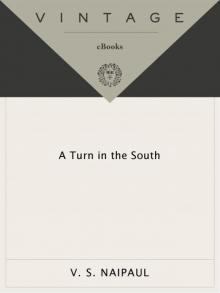 A Turn in the South (Vintage International)
A Turn in the South (Vintage International)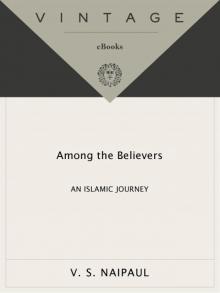 Among the Believers
Among the Believers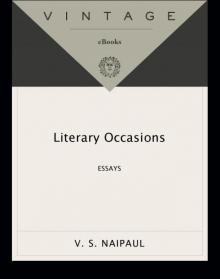 Literary Occasions
Literary Occasions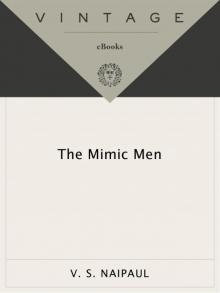 The Mimic Men
The Mimic Men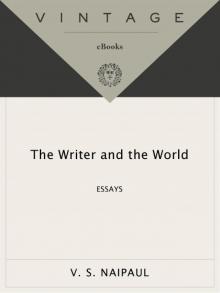 The Writer and the World
The Writer and the World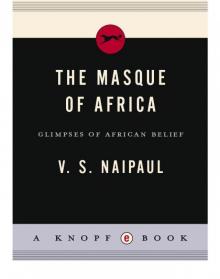 The Masque of Africa
The Masque of Africa